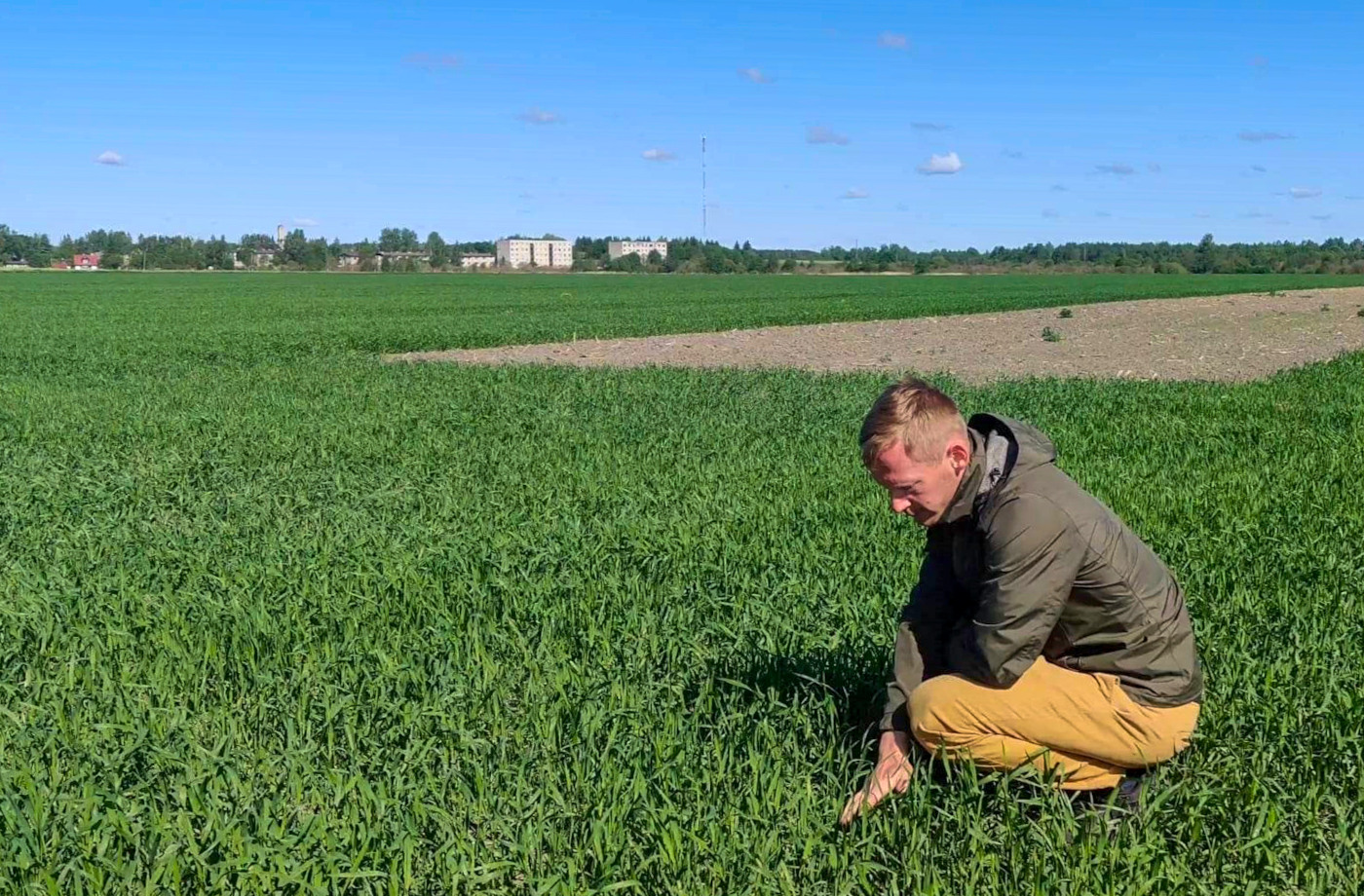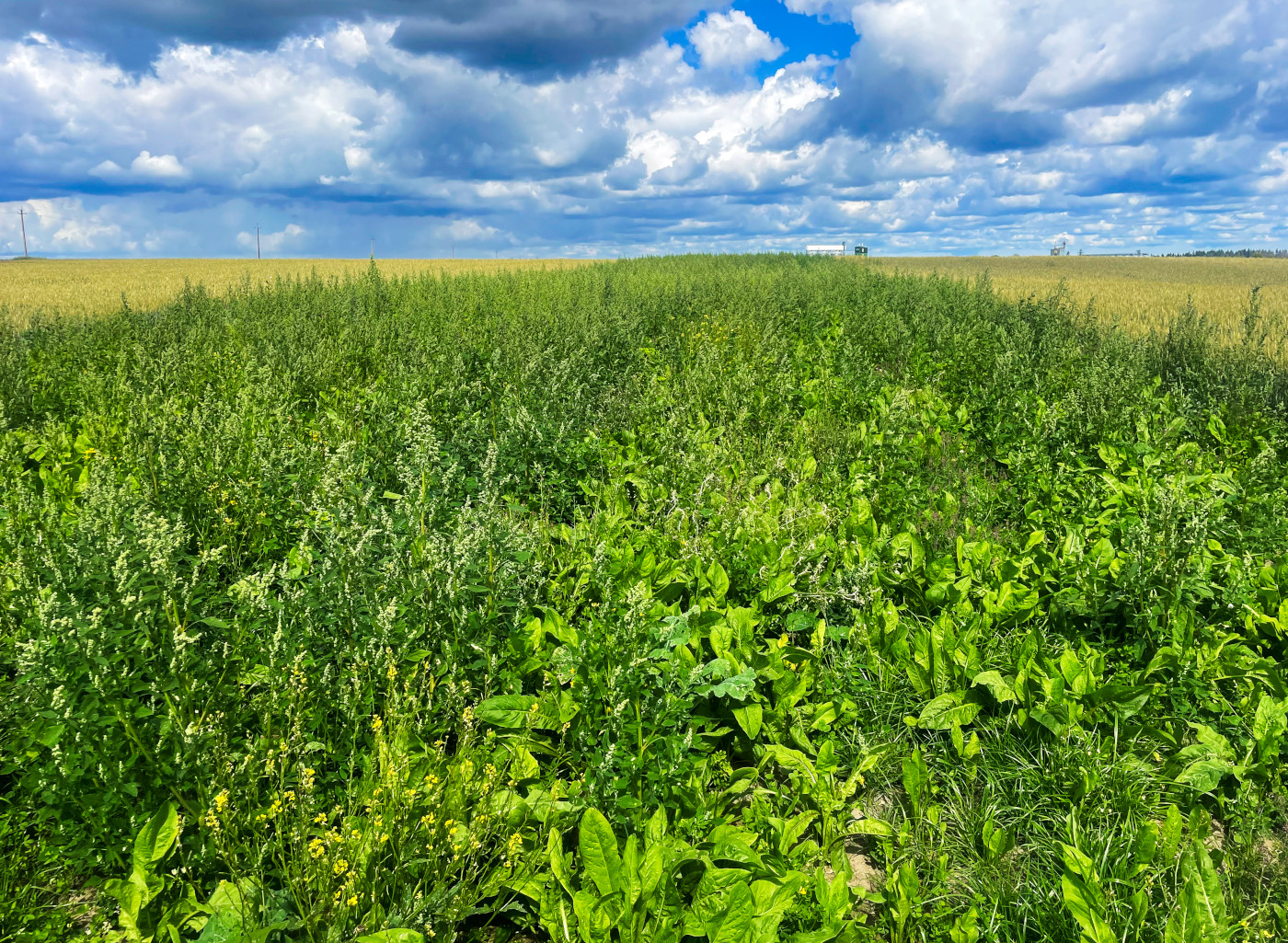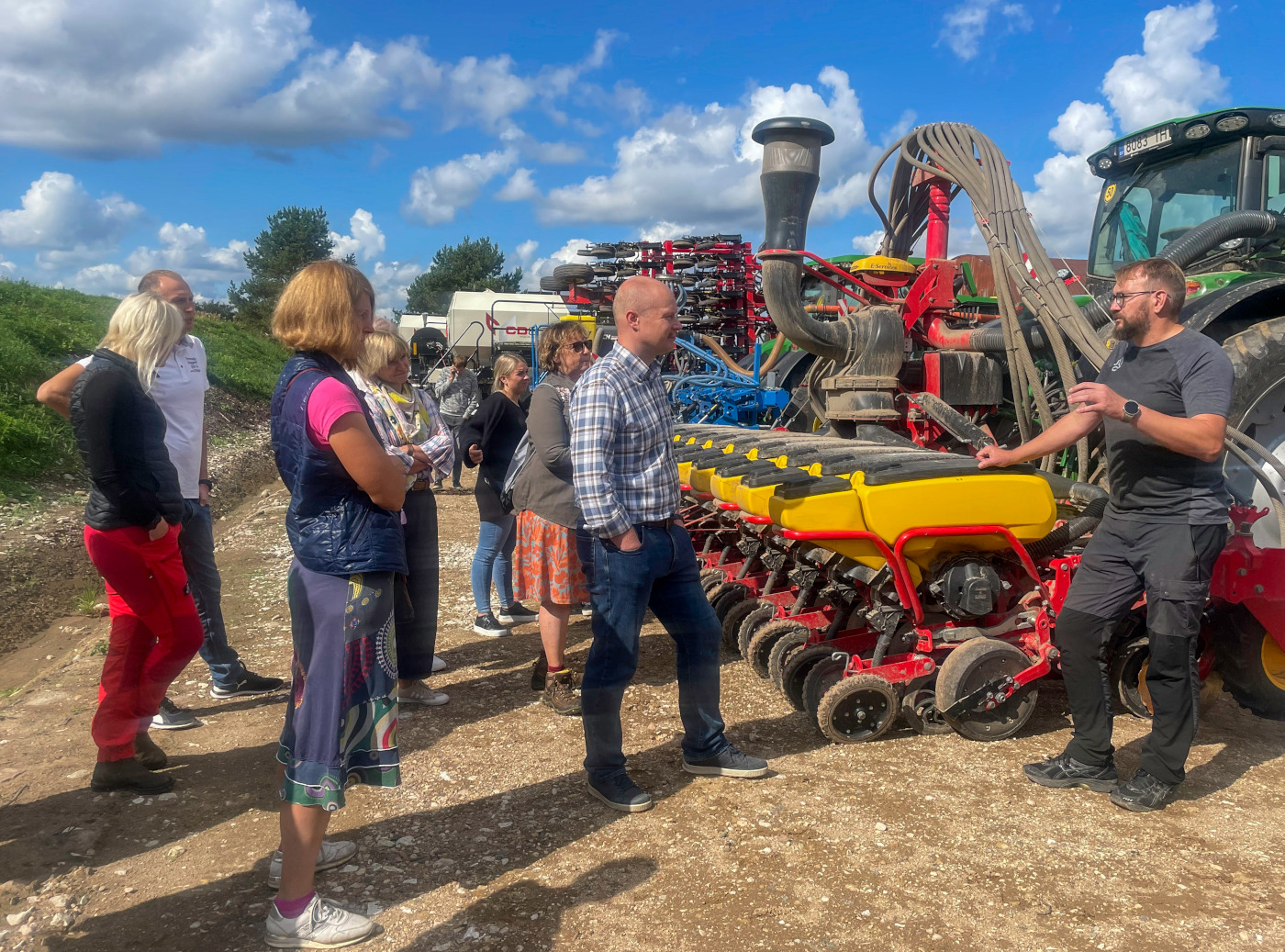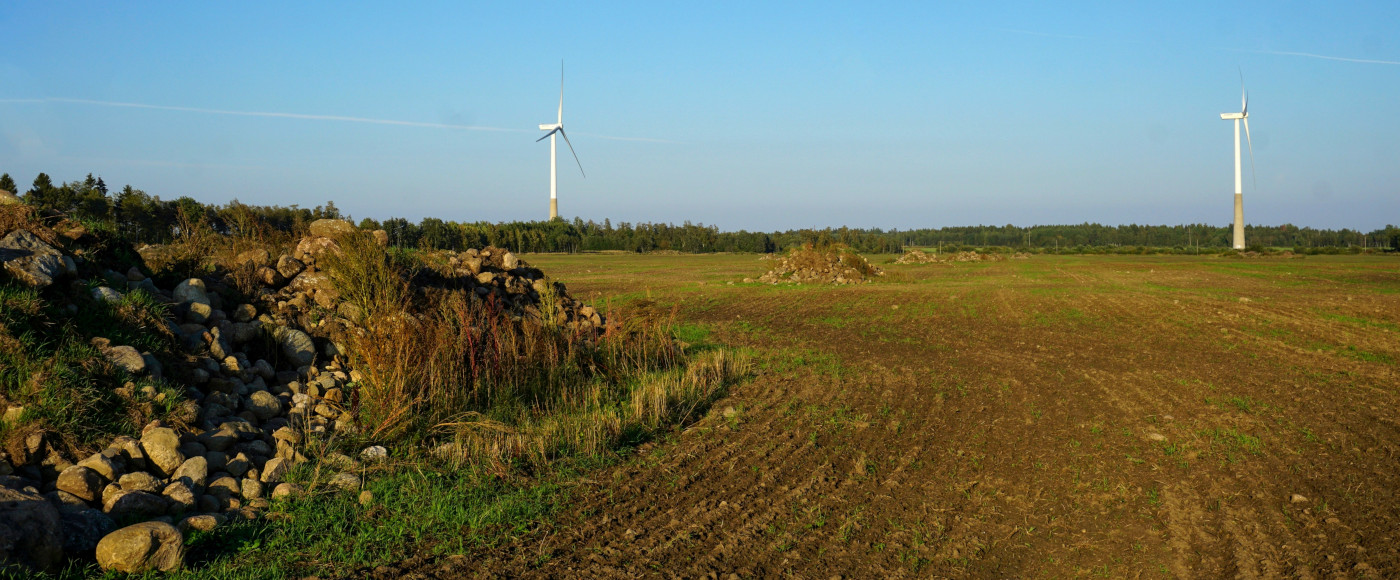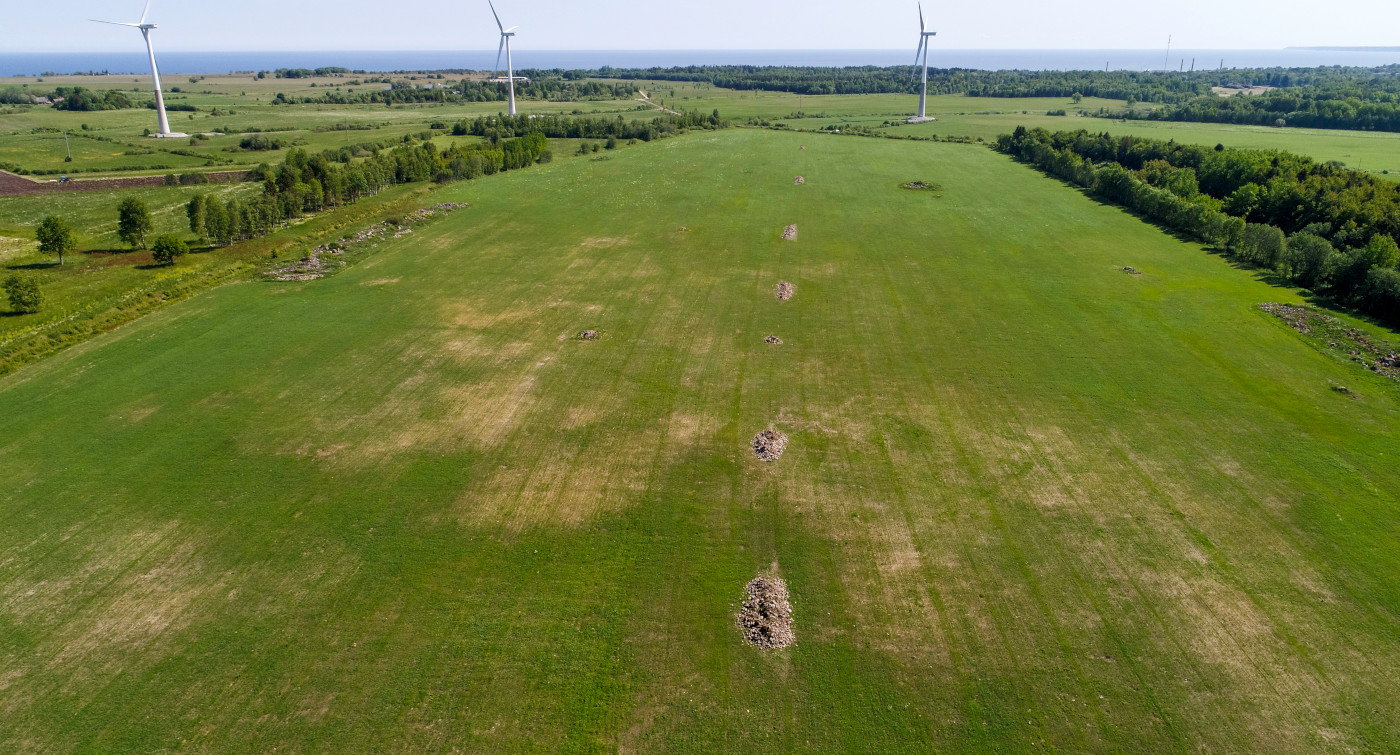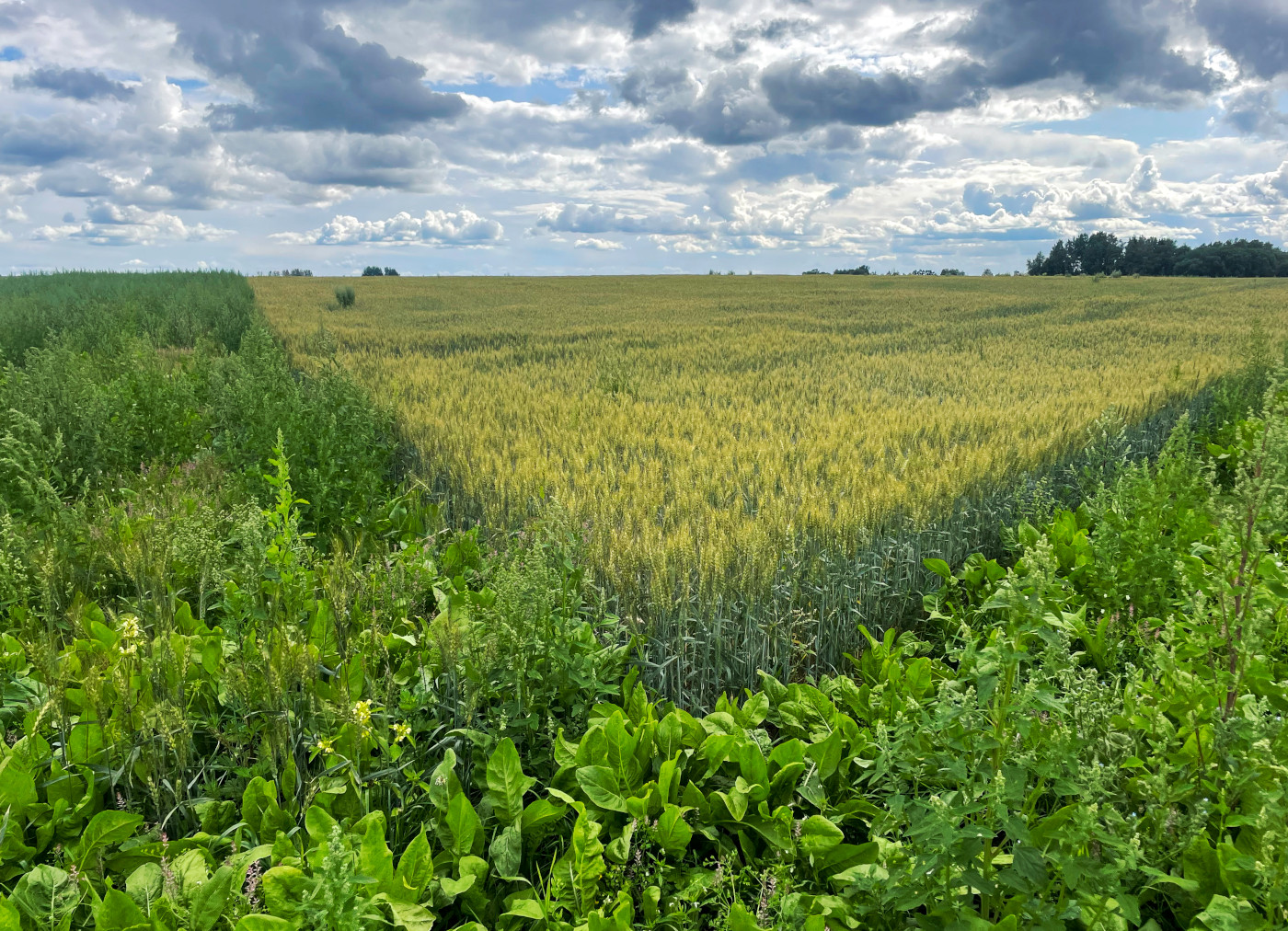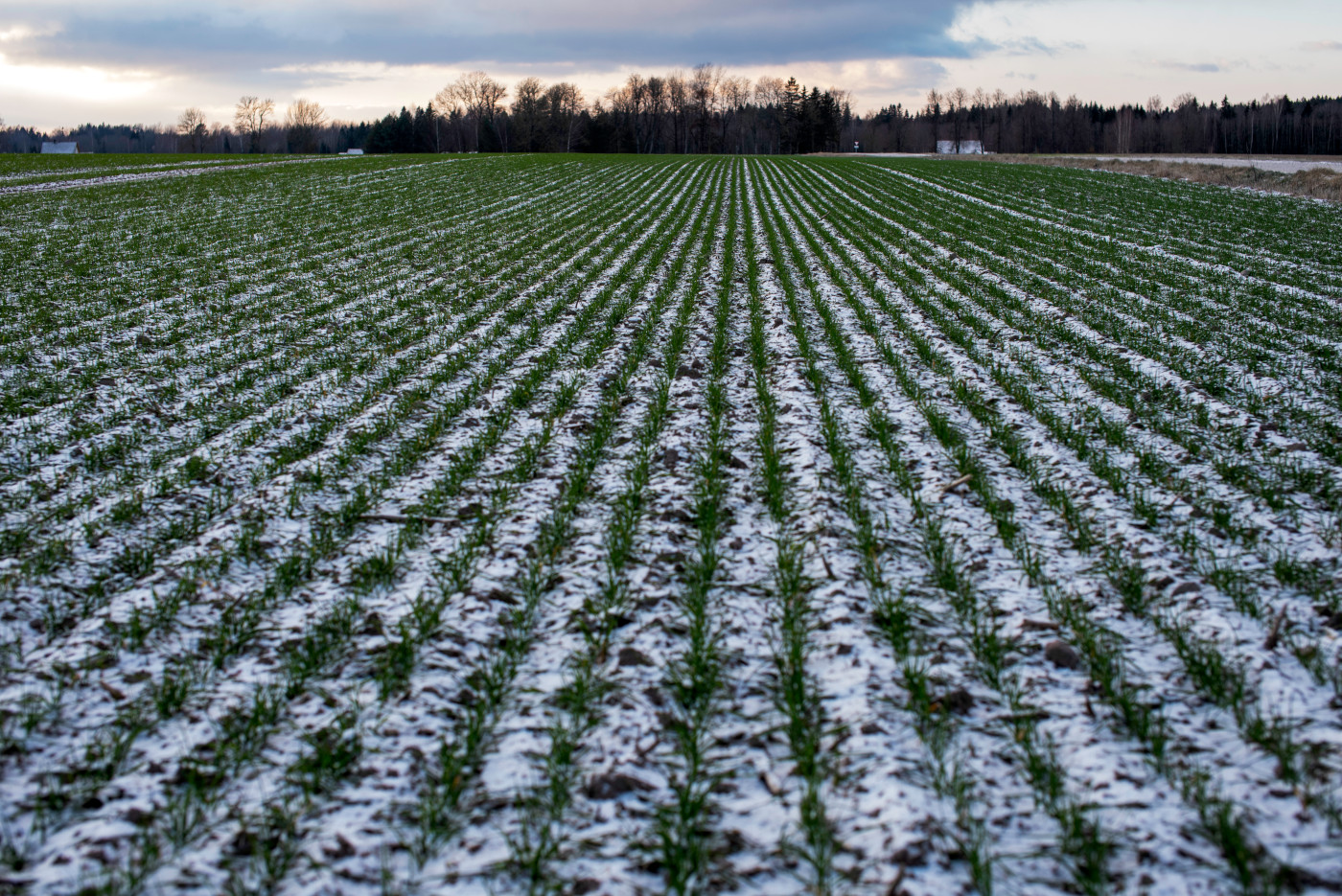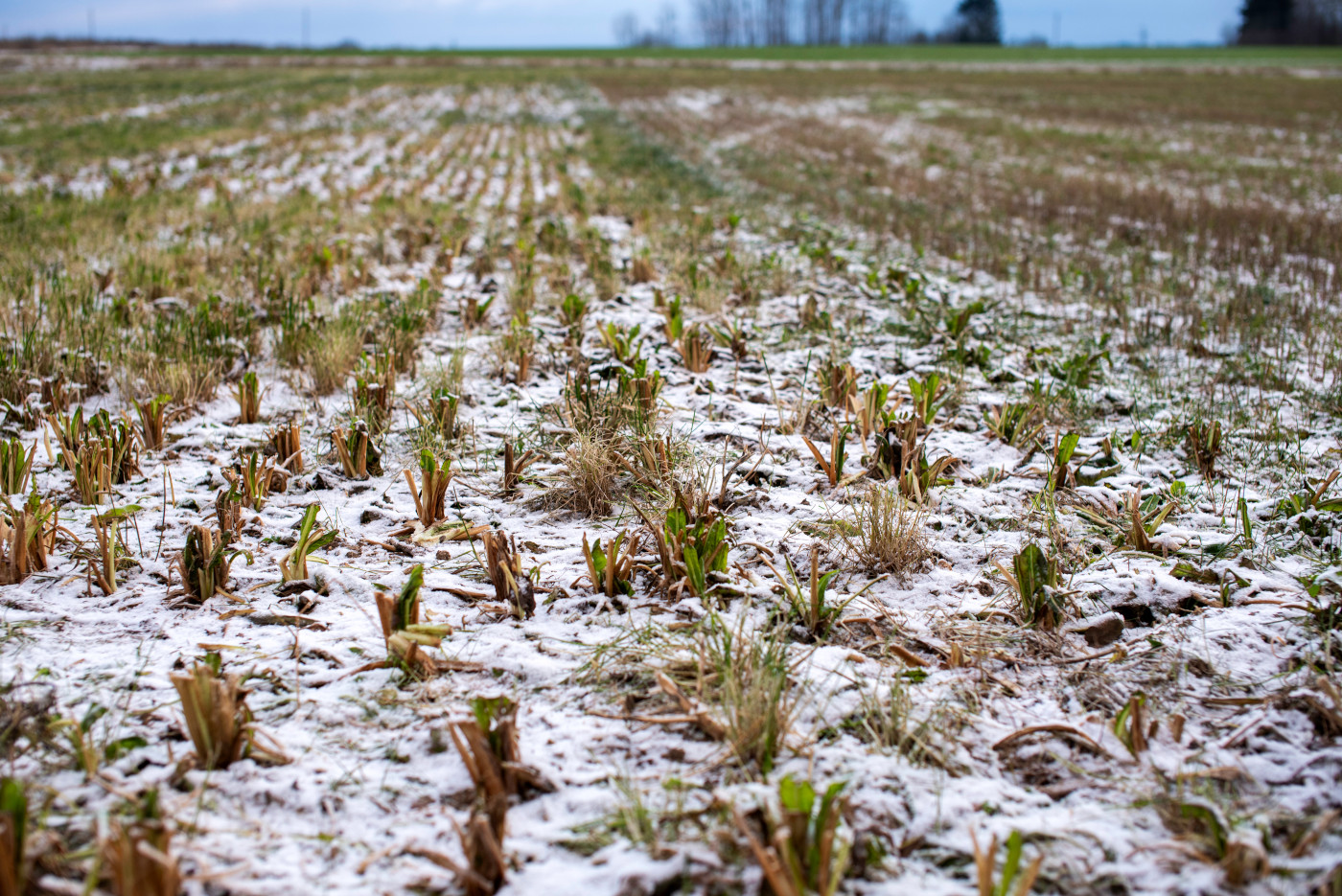Much of the biodiversity of Estonia and Europe is related to agricultural landscapes. The well-being of many insect species, vascular plants, and birds depends on food production practices, although the impact is twofold – the quality and sustainability of food production, in turn, depend on the biodiversity surrounding the field, soil health, and our ability to mitigate and adapt to climate change.
The biodiversity of agricultural landscapes and fertile soils are integral parts of food production, and the diversity of the landscape also provides livestock with a healthy habitat, clean water, and a varied diet.
By the beginning of 2024, seven agricultural producers, in collaboration with researchers from the University of Tartu, have established demonstration areas where the effects of various agro-ecological practices on yield and biodiversity are monitored.
- One of Central Estonia’s largest agricultural entrepreneurs, Ahti Kalde (Sadala Agro), has established 12-metre wide grassland strips on approximately 58 hectares of field, covering about eight hectares of the field. The aim is to increase landscape diversity, provide habitats, shelter, and feeding grounds for various arthropods, including pollinators and natural enemies of pest insects as well as for birds and small mammals. Additionally, well-maintained grassland strips reduce weed and pest insect populations, thereby reducing the need for pesticide use. Previously, Ahti Kalde had established a stone wall at the edge of the farmland and planted trees along it. The stone wall and its surrounding ecosystem help regulate the microclimate, prevent erosion and provide habitats for pollinators and natural enemies of pest insects.
At the Sadala field, three different seed mixtures are planned for testing on the grassland strips. In 2023, both species-poor and species-rich mixtures were sown. This year, a mixture that favours the enemies of crop pests will be added to the third strip.Image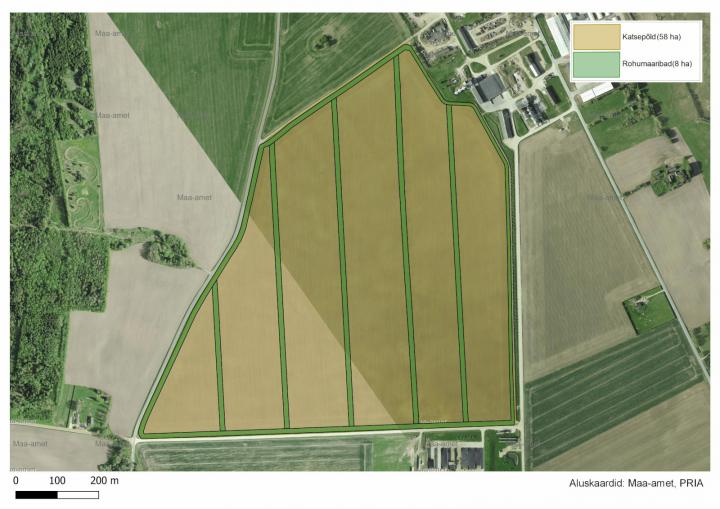
- The Järvamaa Vocational Training Centre is also experimenting with 12-metre wide grassland strips. The test field is 25 hectares, with grassland strips covering about three hectares. Additionally, the Järvamaa Vocational Training Centre plans to test winter cover crops, which help prevent soil erosion and nutrient runoff. This also creates more favourable conditions for species living in agricultural landscapes.
Image
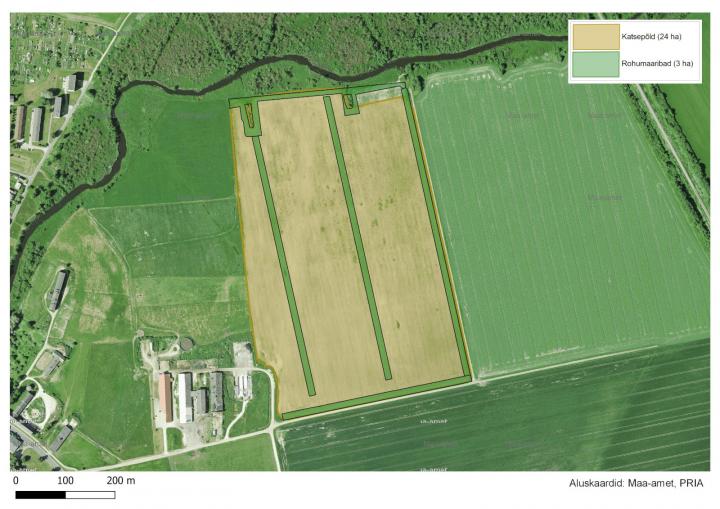
- Raimond Pihlap (Ökotalu OÜ) cultivates organic grains on 2,000 hectares from Lääne-Virumaa to Valgamaa and is testing grassland strips and field islands on approximately 32 hectares. Grassland strips and field islands cover about four hectares of his fields. Field islands, or small forest patches within fields, provide habitats for many plants, birds, mammals, fungi, earthworms, and arthropods, which in turn help control pests, sequester carbon and regulate nutrient cycles.
Image
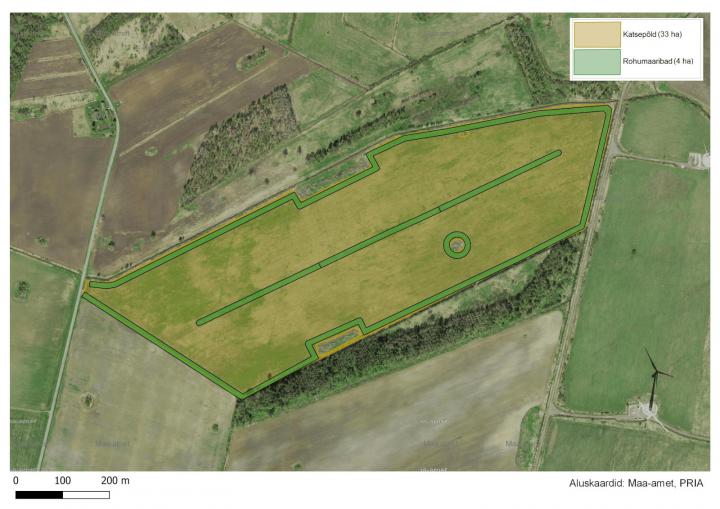
- Kalmer Visnapuu (Piira Talu OÜ) established 9-metre wide grassland strips on about five hectares of a 46-hectare field. Kalmer set up five different seed mixture treatments on the test field, leaving the edge strips for natural development. The field has ten tree and shrub-covered field islands, surrounded by grassland strips to diversify the agricultural landscape and create transition zones. Older and larger field islands are richer in biodiversity and offer more ecosystem benefits, but younger and smaller ones are also valuable, providing habitats for species that would otherwise not be found in agricultural landscapes.
Image
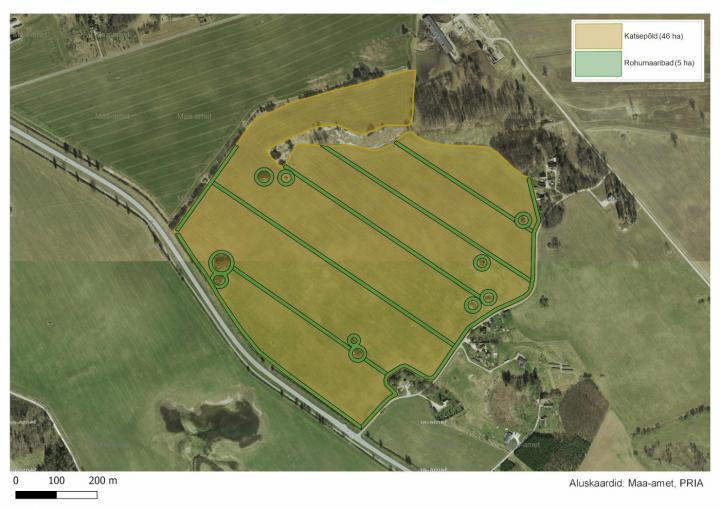
- Sander Hiire (Mäemõisa OÜ) established 8-metre wide grassland strips on about three hectares of a 32-hectare field. On three grassland strips in the middle of the test field, he is experimenting with different seed mixtures. On the outer strips, he sowed a species-rich, moderately moist grassland mixture. Additionally, Sander plans to establish a grassland strip in the autumn that spans multiple fields, creating a green corridor in the agricultural landscape that connects a larger forest area.
Image
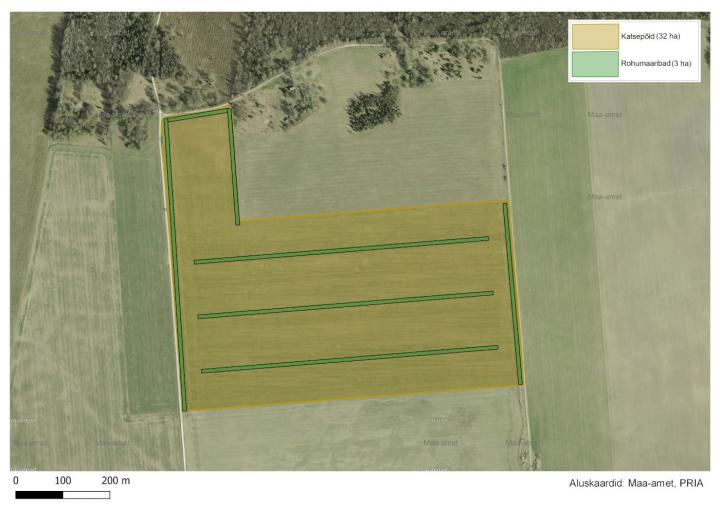
- The 2023 Farmer of the Year, Airi Külvet (Puutsa Farm), established a species-rich cultivated grassland on a 17-hectare field, with plans to spread hay bales from a semi-natural grassland on the southern part. Additionally, Airi intends to graze the areas, thus connecting her fields to about six hectares of natural grassland.
Image
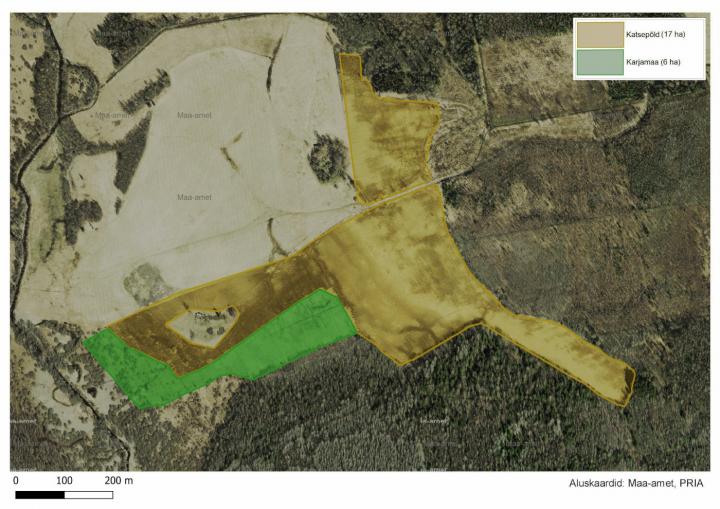
In the course of the LIFE-IP ForEst&FarmLand project, agricultural producers, in cooperation with researchers from the University of Tartu, will establish demonstration areas, where the impact of different agro-ecological techniques on yield and biodiversity will be monitored. Researchers will help to find precise activities for each sample area that are compatible with the specific landscape and meet the preferences of producers. Techniques that increase soil carbon sequestration, enhance pollination and natural pest control, and otherwise combine food production and nature conservation are being tested. Researchers are studying the impact that the creation of grassland strips, establishment of arable islands, leaving unsown patches in cereal crops for the Eurasian skylark, and many other activities have on biodiversity and yields.
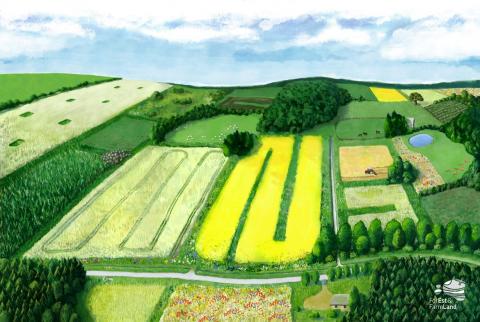
Illustration of an eco-friendly agricultural landscape. Drawing: Maria Välja
Based on the data obtained during the experiments, we will identify the most suitable agro-ecological techniques for the conditions in Estonia, which will enable the development of more expedient agricultural support schemes in the future. Nature-friendly practices are available at heapold.ee/tegevused (only in Estonian so far).
By the beginning of 2024, one of the largest agricultural companies in Central Estonia, Sadala Agro, Järvamaa Vocational Education Center, Airi Külvet - Farmer of the Year 2023 and organic producer Raimond Pihlap, have joined us.
Collaboration with Estonian farmers to reconcile food production, biodiversity and healthy soils is noticed also by Bankwatch Network!
